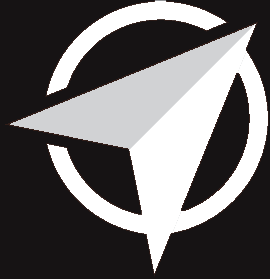
Section 2
Managing Processes and Projects
This section is about work that is uniquely the functional domain of learning. It starts with a variety of ways to work with senior business executives to assess the capability of the organization as a system of systems. This view is much larger than learning and includes not only people capabilities but also resources, communications, and culture. It features many tools and techniques to assess the organizational needs to excel in the current market and to be competitive in the future. The ideas are based on learning research but also include techniques from other fields, such as Lean, Agile, project management, and organization development.
How do you design the work systems in your organization to ensure they are meeting current and future requirements? How do these processes enhance organizational alignment? This section demonstrates some of the many ways the learning team can make an impact on organizational goals and business results using a variety of core learning processes to build a more competent domain work system to use in service to business partners.
Chapter 5 focuses on assessing the current state and a clear understanding of a desired future state to determine performance gaps. As experts in the realm of understanding employee needs and designing learning experiences, generally learning leaders have an expansive toolkit. We can use our experience to bring context and purpose together to develop a clear and succinct point of view for when and how to use a high-impact tool or technique. But perhaps the biggest conundrum we face with the plethora of tools is how to decide how to decide? Which is the best and most efficient way to close the gap? In this chapter, Chris Garton provides insights on several ways to assess needs. During the 2019 Fall Lab show-and-tell sessions, Jill Carter, Mark Lemon, Taylor Harlin, and Susana Sipes shared their written case studies and discussion presentations. Based on follow-up activities with participants and interviews with the presenters these practices and tools are included.
Once organizational needs are determined to be associated with employee capability building, learning leaders can delve deeper into the gap and work with their business partners to determine the most effective learning solutions. Chapter 6 addresses one of the most pressing issues we face—what is commonly referred to as the 1-800-TRAIN problem. The manager calls the learning department and asks for specific training without any assessment or analysis or skill in learning theory. Jerry Kaminski provides some suggestions for working with this type of request, which is usually for a triage situation. Once addressed, the experienced and skilled business learning leader can use their tools in instructional systems design to focus on the root cause of the gap.
Chapter 7 highlights the many ways neuroscience research is elevating learning practices, especially to make them stickier and more durable over the long term. In the workplace, learning is about changing performance-based behaviors as a result of new skills and knowledge. It is not so much about what we know but what we do, the actions we take. Leanne Drennan, Casey Garhart, and Joan McKarnan of IBM share research from neuroscience and then provide actions to take. One example they share is using priming questions to help connect new information with what is already known.
In chapter 8, Suzanne Frawley shares details on using a project-based approach to respond to a business partner’s request. She uses the Covey adage “Start with the end in mind” by gaining clarity on the organizational need with this question: What is the business challenge your team is trying to solve? As part of the collaborative work she incorporates design thinking methods and tools to work on both a learning solution and to build the design team’s problem-solving capability. The big takeaway is the value of iteration as the solution is built.
While many outside of the talent profession still think of learning as a stand-alone event divorced from work itself, learning happens in many different ways and is a continuous process or journey for most workers. There are a variety of ways learning is built into the organizational system, including formal instruction in the classroom, working with colleagues, learning from experiences, and independent learning. In chapter 9, Alan Abbott of UPS and Rachel Hutchinson of Hilti share how they use the 70-20-10 framework to build a more comprehensive learning process. The 70-20-10 framework does not eliminate formal training, and in many cases recognizes that formal training is the starting point. However, it does recognize that learning can take place in a variety of formats and locations and suggests using a variety of learning modalities—formal learning, social learning with others, and learning from a variety of experiences.
